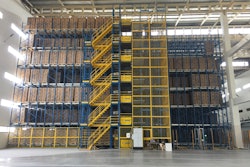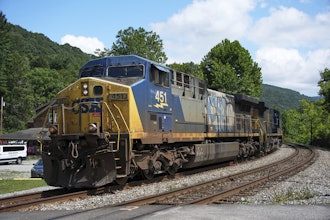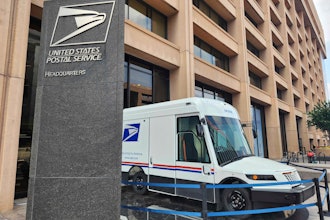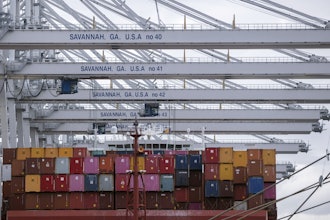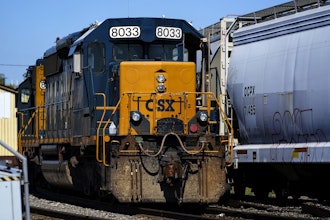Inbound freight management remains an afterthought for most shippers, but the average company spends more than 40 percent of its annual freight budget on inbound freight, reports the Aberdeen Group via Logistics Management.That’s between 3.6 and 5.2 percent of total annual sales. Unfortunately, these costs are often the result of poor visibility and lost insights in managing inbound logistics. Reducing transportation spend associated with inbound management through an inbound freight TMS-optimized system, and expert providers are the low-hanging fruit. First, shippers must understand the risks of reduced efficiency in inbound freight management, why a TMS is a solution and the benefits it provides.
The Risks of Poor Efficiency in Inbound Freight Management
As explained by Scott Vanselous of Inbound Logistics, poor efficiency permeates inbound freight management. Often, shippers leave inbound freight management in the hands of suppliers and vendors. Meanwhile, companies have further broken apart business and logistics over time. As mergers and acquisitions occur, multiple companies end up with an array of different systems and platforms in years. Unfortunately, these systems rarely can integrate, and this results in lost efficiencies. Ultimately, failure to gain real-time management visibility and decision-support information will result in missed opportunities for efficiency and added costs. However, the use of inbound freight TMS capabilities is the answer to shippers’ problems.
Inbound Freight TMS and Integration Maximize Efficiency
The leading way shippers can recoup the lost costs of inbound freight management goes back to the use of inbound freight TMS capabilities. As noted previously, the diverse set of platforms and systems in use will require an added layer of complexity. In other words, the best inbound freight TMS capabilities on the planet will be limited if they cannot connect with other systems. By integrating systems, shippers can ensure they have a full-view picture of operations, which will allow for the identification of potential issues and resolution of them.
Additional Benefits of Managing Inbound Freight With Modern Technology
Any plan for managing inbound freight with modern technology must begin with architecture, and appropriate infrastructure and architecture must be acceptable to all parties, including suppliers, carriers, shippers and even consumers. For example, a system that does not allow for complete visibility for consumers, especially in the age of e-commerce, will result in poor efficiencies, as well as lost opportunities. In other words, the system in use must have the capability to ensure freight will be delivered on time, free of freight damage and with real-time information to back up all events allowing shippers to organize their docks better, allowing carriers to get back to what they do best—moving freight.
Moreover, as explained by Scott Vanselous of Inbound Logistics, the inbound freight TMS capabilities must allow for, multimodal shipments, including flatbed loads, truckload vans, full truckloads, LTL shipments, parcels, and intermodal shipping. Even though this seems obvious, some systems do have extreme limitations with managing multimodal shipments.
Simultaneously, and integrated inbound freight TMS platform gives confidence to all parties, including consumers, reports Thomas Griffin of Inbound Logistics which results in improved scheduling and management of inbound freight. In fact, improved scheduling management of inbound freight explains Anthony Vitiello of Inbound Logistics, reduces the amount of time lost in the following ways:
- Less time lost on the dock translates into more driving time for truckers, essential given the state of the ELD mandate and HOS regulations.
- More on-time pickups and deliveries translate into a reduced risk of backorders and eliminate the need to carry safety stock.
- Improved inbound freight scheduling contributes to your business-to-business and direct-to-consumer shipments resulting in fewer late fees.
- Better planning of the dock allows workers to put away orders based on the schedule, avoiding lost opportunities, especially when using third-party labor resources.
- Workers spend less time scheduling and using email to communicate with transportation management; everything within the TMS gets everyone on the same page.
- When delays do occur, using inbound freight TMS automation allows for real-time alerts and notifications to drivers, improving re-routing and reducing the impact of such delays.
Augment Efficiency in Your Supply Chain With the Right 3PL Partnership
Shippers have grand opportunities to improve inbound freight TMS use and scale, but it all depends on the ability to integrate your systems. Shippers that are unaware how to integrate systems or lack the ability within current systems should consider working with an expert third-party logistics provider (3PL), such as Cerasis, which offers the Cerasis rater—a comprehensive TMS with inbound freight management capabilities.
Adam Robinson oversees the overall marketing strategy for Cerasis including website development, social media and content marketing, trade show marketing, email campaigns, and webinar marketing. Mr. Robinson works with the business development department to create messaging that attracts the right decision makers, gaining inbound leads and increasing brand awareness all while shortening sales cycles, the time it takes to gain sales appointments and set proper sales and execution expectations.
A version of this story first appeared on the Cerasis blog.







